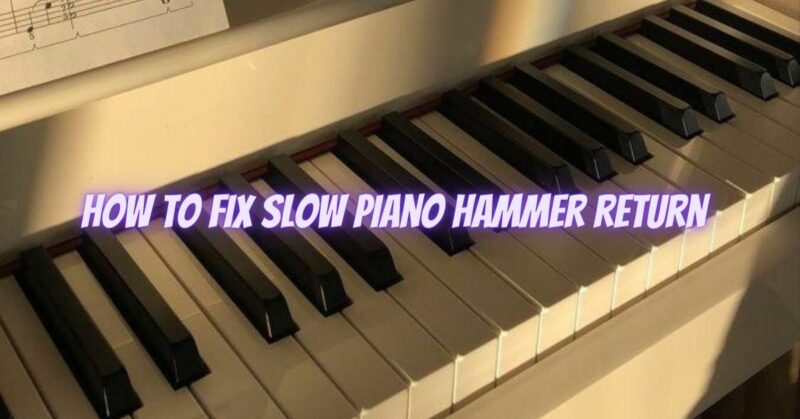A slow piano hammer return can be a frustrating issue that affects the playability and responsiveness of the instrument. When the hammers take longer to return to their original position after striking the strings, it can impact the overall sound and feel of the piano. Fortunately, there are steps you can take to troubleshoot and fix this problem. In this article, we will guide you through the process of resolving slow piano hammer return.
- Clean the Piano Action:
The first step is to ensure that the piano action is clean and free from any dust, debris, or foreign objects that might be obstructing the hammers’ movement. Gently clean the action using a soft brush or compressed air.
- Lubricate the Action:
Proper lubrication is essential for the smooth functioning of the piano action. Use a high-quality, piano-specific lubricant to lubricate the moving parts of the action, such as the hammer flanges, repetition lever, and pivot points. Avoid using household oils, as they can cause damage to the action over time.
- Check Hammer Flanges:
Inspect the hammer flanges, which allow the hammers to pivot, for wear or damage. If they appear worn or damaged, consider replacing them with new flanges.
- Adjust Hammer Springs:
The hammer springs help lift the hammers back to their resting position. Ensure that the springs are correctly adjusted and have sufficient tension. If the springs are weak or damaged, consider replacing them.
- Align the Repetition Lever:
The repetition lever is responsible for allowing rapid repetition of notes. Make sure it is properly aligned and regulated. A misaligned repetition lever can cause slow hammer return.
- Check Damper Mechanism:
The damper mechanism, which lifts the dampers from the strings when the keys are pressed, may become sticky or sluggish over time. Clean and lubricate the damper mechanism to ensure smooth operation.
- Regulate the Piano Action:
If the issue persists, it may be time to regulate the entire piano action. Regulation involves adjusting various action components to work harmoniously together. This task is best left to a qualified piano technician who has the necessary expertise and tools.
- Regular Maintenance:
Preventive maintenance is essential to keep your piano in optimal condition. Schedule regular piano tunings and inspections by a qualified technician to catch any potential issues early on and ensure the piano’s overall health.
- Play the Piano Regularly:
Regularly playing the piano keeps the action in motion and can help prevent sluggishness caused by lack of use.
Conclusion:
A slow piano hammer return can be addressed by performing thorough cleaning, proper lubrication, and adjustments to the action components. Regular maintenance and care are crucial for keeping your piano in top shape and preventing potential issues. If you are uncertain about any aspect of piano repair or maintenance, always consult a professional piano technician to ensure that the problem is addressed correctly and to preserve the integrity of your instrument. With proper care, your piano will continue to provide you with years of enjoyable and responsive playing.


